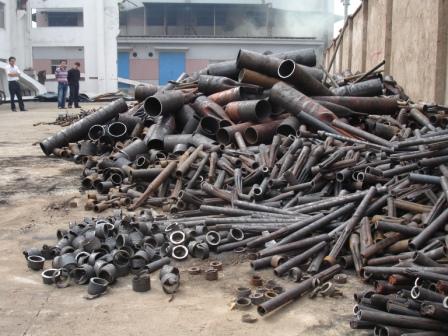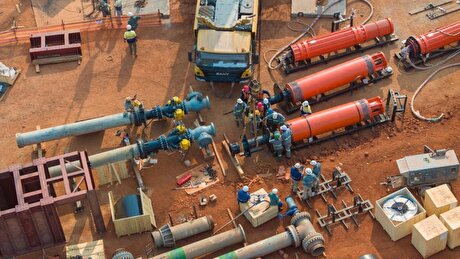
China to Ramp-up Efforts to Curb Substandard Steel Production

As China’s campaign to cut overcapacity becomes more stringent which will increase sector’s profitability, the risk of new illegal capacity has also surged as some Chinese companies play tricks to build new capacity, and the production of substandard steel reoccurs as quoted by Wang Wei, head of the raw material department of the Ministry of Industry and Information Technology.
China has been following production cuts over the past two years in order to control overcapacity. The country has pre-achieved its target set by the 13th Five-Year Plan (2016-20) by reducing 150 MnT of crude steel capacity and has removed 140 MnT of substandard steel capacity, according to Wang.
Now to keep a check on substandard steel production units, an inspection panel, co-organized by the ministry and the National Development and Reform Commission (NDRC), will soon start their inspection tour during the third quarter. Substandard steel production and violations of related rules and laws when conducting capacity replacement projects will be the focus of the panel’s inspection, and they will serve as warnings to anyone who attempts to increase new capacity illegally, Mr. Wang said.
He Wenbo, the executive vice-chairman of the CISA, said that to maintain the progress in cutting overcapacity, it is important to improve the layout of steel capacity on a national level, instead of just within a province, a city, or even a county. He suggested measures to encourage competent steel companies to conduct mergers and acquisitions across cities, provinces and even regions, in order to efficiently cut capacity and enhance the national steel capacity layout.
He also suggested that it is important to evaluate the actual results of capacity replacement projects, to ensure removed old capacity outstrips new capacity, saying that construction of new capacity must be strictly regulated. In the fast half of 2019, China produced 492 million tons of crude steel and 587 million tons of steel products, with year-on-year increases of 9.9 percent and 11.4 percent respectively, figures from the CISA showed.



Trump weighs using $2 billion in CHIPS Act funding for critical minerals

Codelco cuts 2025 copper forecast after El Teniente mine collapse

Electra converts debt, launches $30M raise to jumpstart stalled cobalt refinery

Abcourt readies Sleeping Giant mill to pour first gold since 2014

Barrick’s Reko Diq in line for $410M ADB backing

Nevada army depot to serve as base for first US strategic minerals stockpile

Tailings could meet much of US critical mineral demand – study

Viridis unveils 200Mt initial reserve for Brazil rare earth project

SQM boosts lithium supply plans as prices flick higher

Energy Fuels soars on Vulcan Elements partnership

Northern Dynasty sticks to proposal in battle to lift Pebble mine veto

Giustra-backed mining firm teams up with informal miners in Colombia

Critical Metals signs agreement to supply rare earth to US government-funded facility

China extends rare earth controls to imported material

Galan Lithium proceeds with $13M financing for Argentina project

Silver price touches $39 as market weighs rate cut outlook

First Quantum drops plan to sell stakes in Zambia copper mines

Ivanhoe advances Kamoa dewatering plan, plans forecasts

Texas factory gives Chinese copper firm an edge in tariff war

Energy Fuels soars on Vulcan Elements partnership

Northern Dynasty sticks to proposal in battle to lift Pebble mine veto

Giustra-backed mining firm teams up with informal miners in Colombia

Critical Metals signs agreement to supply rare earth to US government-funded facility

China extends rare earth controls to imported material

Galan Lithium proceeds with $13M financing for Argentina project

Silver price touches $39 as market weighs rate cut outlook

First Quantum drops plan to sell stakes in Zambia copper mines

Ivanhoe advances Kamoa dewatering plan, plans forecasts

















